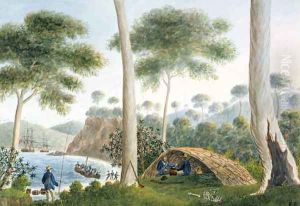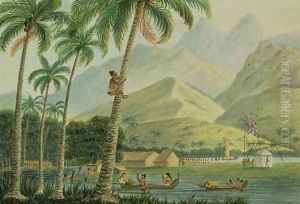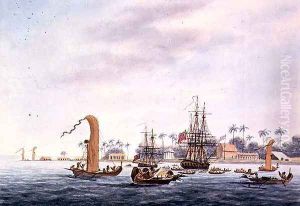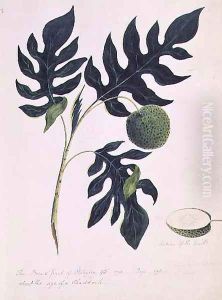Captain George Tobin Paintings
Captain George Tobin was a notable British naval officer, artist, and explorer born in 1768. His life spanned an era of significant historical events, including the American War of Independence, the French Revolutionary Wars, and the Napoleonic Wars. Tobin is particularly remembered not only for his naval career but also for his contributions to the field of art, especially for his detailed and vivid watercolors and sketches that provide invaluable insights into the maritime and natural history of the late 18th and early 19th centuries.
Tobin embarked on his naval career at a young age, joining the British Royal Navy and serving under several prominent commanders, including Captain James Cook on his third voyage in the capacity of a midshipman on other ships. However, it was during his later voyages, particularly on the HMS Providence under Captain William Bligh, that Tobin began to distinguish himself both as a competent officer and as a talented artist. His artworks during these voyages are notable for their accuracy and detail, capturing not only the landscapes and seascapes but also the peoples, flora, and fauna encountered during these explorations.
Throughout his naval career, Tobin was involved in several important missions, including escorting convict ships to Australia and participating in battles during the Napoleonic Wars. Despite the demands of his naval duties, Tobin maintained a keen interest in art, meticulously recording his observations and experiences in sketches and watercolors. These artworks are today considered valuable historical documents, offering unique perspectives on the places, people, and events of his time.
After retiring from active service, Tobin continued to pursue his artistic interests, compiling his works into collections that have been exhibited and studied by historians and art enthusiasts alike. His legacy is preserved through his contributions to both the British Royal Navy and the art world, showcasing his talents as an officer and an artist. Captain George Tobin died in 1838, leaving behind a rich collection of artworks that continue to captivate and educate future generations on the maritime history of his era.



